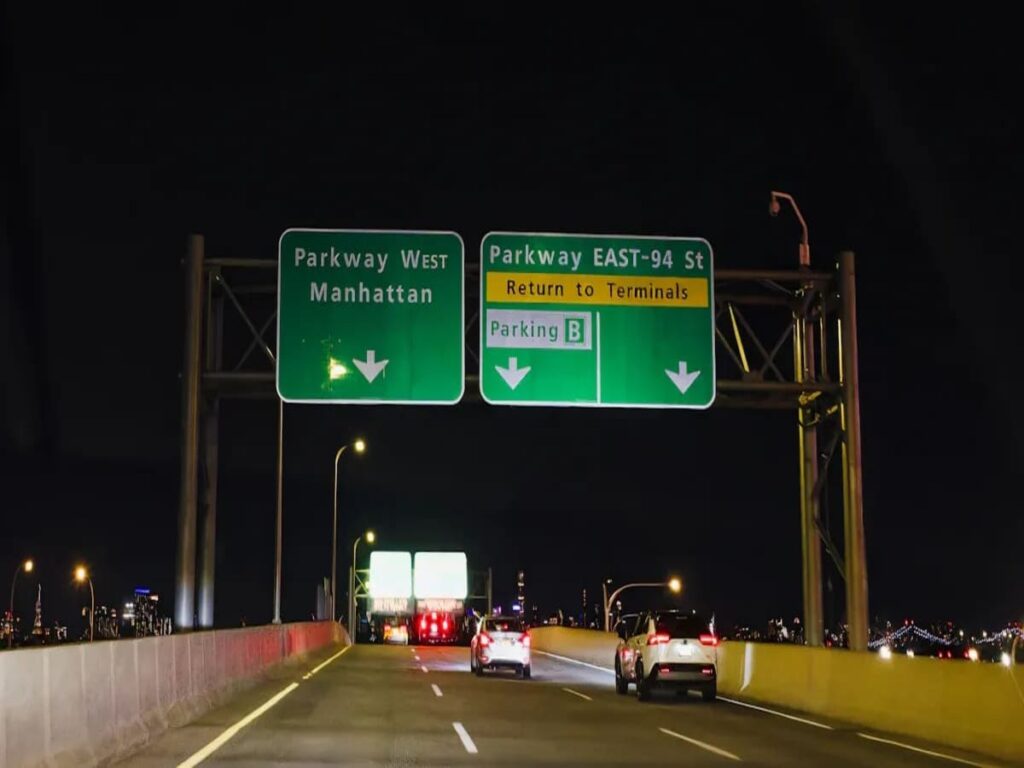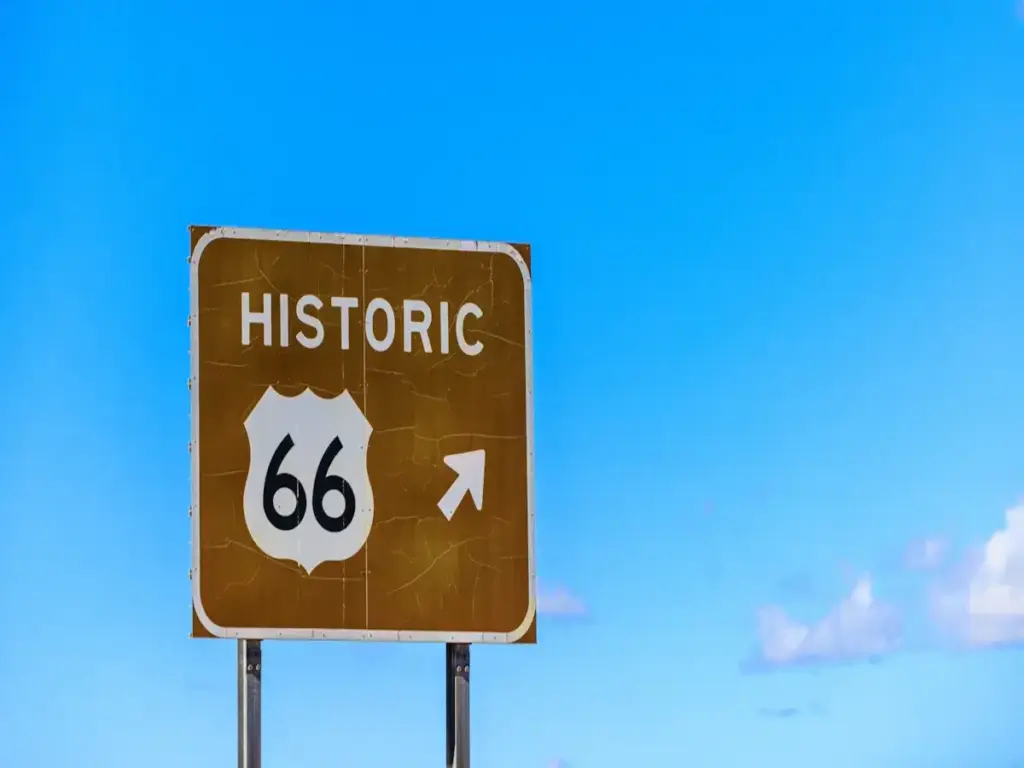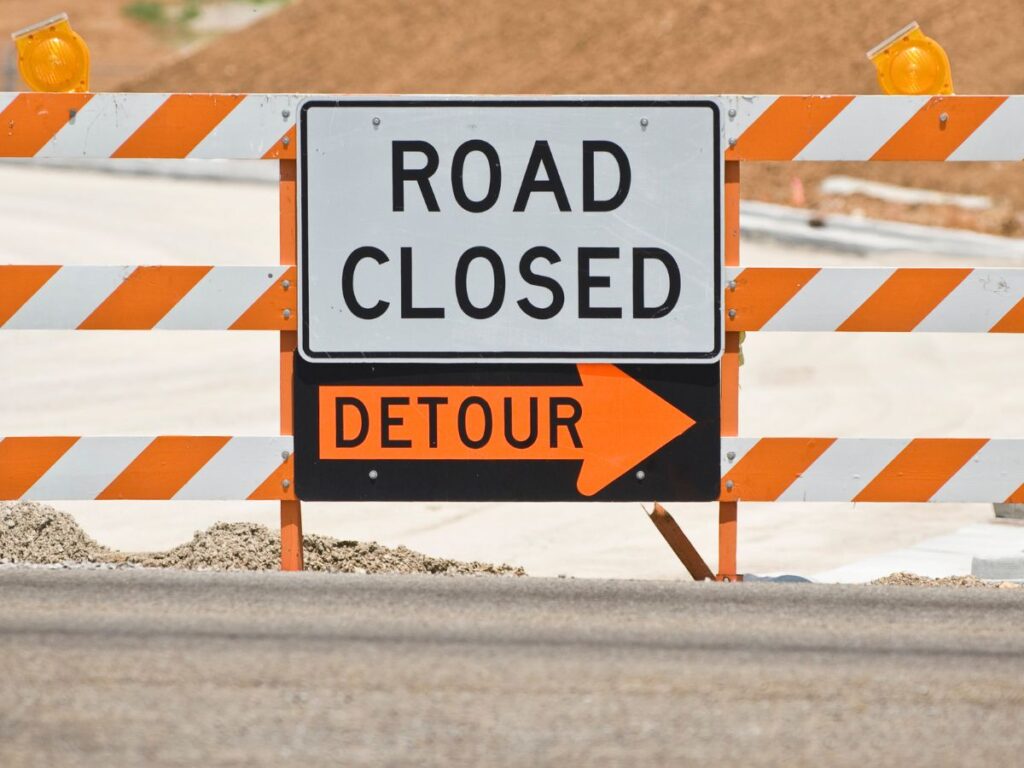
Les traversées de bus et de BRT utilisent des panneaux de sécurité de la circulation pour protéger les individus. Ces panneaux aident les conducteurs et les piétons à éviter la confusion pendant les heures de pointe. Ils réduisent les accidents et améliorent le flux de trafic. Les panneaux de sécurité de la circulation claire aux passages à niveau assurent la sécurité des passagers et facilitent les opérations de bus en douceur. À mesure que les villes élargissent leurs systèmes de transit, L'importance de ces signes continue de croître.
OPTRAFIC offre une large gamme de Panneaux de sécurité de la circulation de haute qualité à vendre, Conçu pour améliorer la sécurité et l'efficacité à Busway et Brt Crossings. Nos panneaux durables et faciles à lire aident à guider les conducteurs et les piétons, Assurer un plus sûr, expérience de transit plus lisse.
Principaux à retenir
- Les panneaux de sécurité de la circulation aident à arrêter les accidents à Busway Crossings. Ils donnent des instructions claires aux conducteurs et aux marcheurs.
- Les panneaux doivent être placés correctement. Ils devraient être faciles à voir et à comprendre pour la sécurité et le trafic lisse.
- Il y a différents signes: Signes de règles, panneaux d'avertissement, et signes d'information. Chaque type aide à garder les gens en sécurité et informés.
- Les signes intelligents et les systèmes d'IA utilisent la technologie pour améliorer la sécurité. Ils donnent des mises à jour en direct et aident à mieux gérer le trafic.
- Les villes peuvent apprendre d'autres endroits pour utiliser de bons panneaux de trafic. Cela rend les bus plus sûrs et plus rapides pour tout le monde.
Pourquoi les panneaux de sécurité de la circulation sont importants pour les traversées de bus et de BRT
Arrêt des accidents
Les panneaux de sécurité de la circulation aident les accidents inférieurs aux passages à niveau. Ils donnent des instructions claires aux conducteurs, promeneurs, et les motards. Cela aide tout le monde à se déplacer en toute sécurité dans les zones de bus et de BRT. Par exemple, Un panneau d'avertissement près d'un passage pour piétons indique aux conducteurs de ralentir. Cela leur rappelle de surveiller les gens traverser la rue. Cela protège tout le monde et évite les accidents.
Les systèmes de transport rapide en bus sont souvent dans les zones animées de la ville. Sans signes, Les gens peuvent être confus, provoquant des situations dangereuses. Les panneaux de sécurité montrent où aller, Rendre les routes plus sûres pour tout le monde. En suivant ces signes, Vous aidez à arrêter les accidents et à maintenir le trafic en douceur.
Aider le trafic à mieux progresser
Un bon flux de trafic est essentiel pour les bus et les systèmes BRT. Les panneaux de sécurité aident les voitures et les gens à se déplacer de manière ordonnée. Par exemple, Un panneau à l'entrée de la voie de bus indique aux conducteurs de laisser passer les bus en premier. Cela aide les bus à rejoindre le trafic facilement et à rester à l'heure.
Lorsque les signes sont bien placés, Ils suppriment la confusion. Les conducteurs savent quand s'arrêter, Les marcheurs savent où traverser, et les bus se déroulent sans retards. Ce travail d'équipe fait que le système de transit fonctionne mieux pour tout le monde.
Garder les passagers en sécurité
La sécurité des passagers est très importante dans les transports publics. Les panneaux de sécurité marquent les endroits comme les passages, Entrées de la voie de bus, et zones de randonnée. Ces panneaux aident les passagers à monter et à descendre des bus en toute sécurité, Même dans les zones animées.
Pensez à attendre dans une station BRT. Un panneau d'avertissement indique aux conducteurs de ralentir près de la gare. Cela réduit les chances d'accidents. Les panneaux sur les passages pour piétons guident également les passagers pour traverser en toute sécurité. En remarquant ces signes, Vous aidez à rendre les transports publics plus sûrs pour tout le monde.
Conseil: Surveillez toujours et suivez les panneaux de sécurité de la circulation près des zones de bus ou de BRT. Rester alerte peut empêcher les accidents et maintenir le bon fonctionnement du trafic.
Types de panneaux de sécurité de la circulation pour les traversées de bus et de BRT
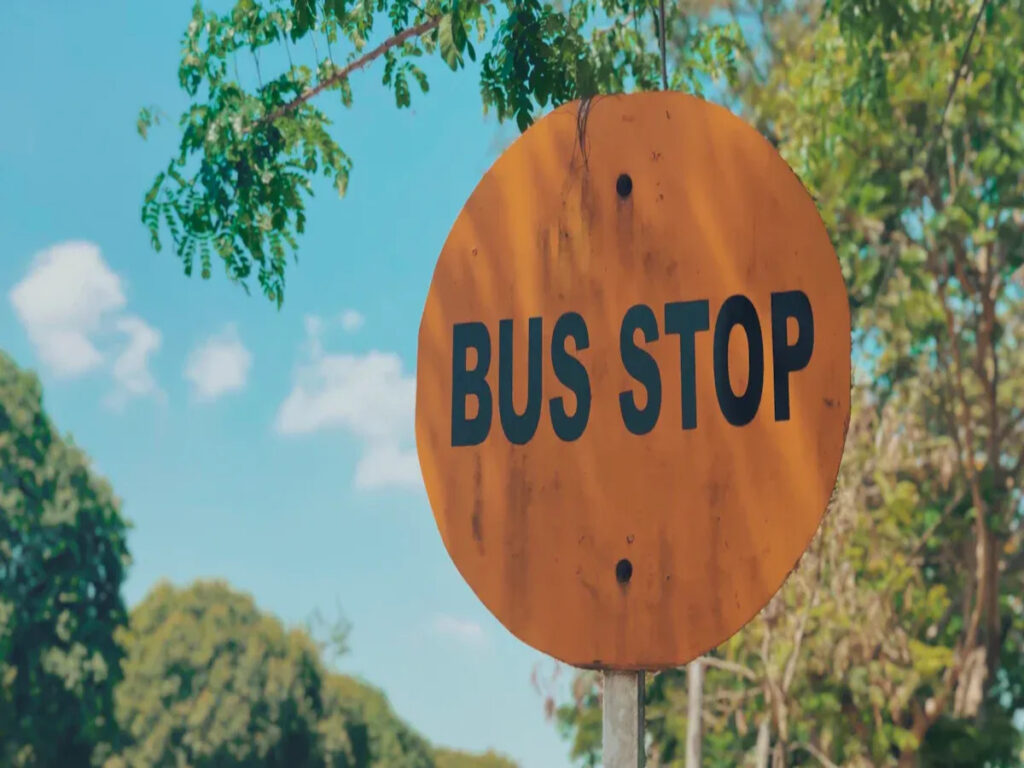
Les panneaux de sécurité de la circulation sont importants pour la voie de bus et les passages à billet de sécurité et de BRT. Ces signes sont regroupés en trois types: réglementaire, avertissement, et d'information. Chaque type aide les conducteurs, promeneurs, et les passagers de différentes manières.
Signes réglementaires
Les panneaux réglementaires montrent des règles pour garder tout le monde en sécurité et organisé. Ces signes disent des choses comme “Rendement aux bus” ou “Pas d'entrée sauf les bus.” Aux passages à bus, Ils donnent la priorité des bus, Réduire les retards et améliorer les horaires de bus. Par exemple, un “Voie de bus uniquement” Le panneau empêche les voitures des voies de bus, Ainsi, les bus peuvent se déplacer plus vite.
Vous verrez des panneaux réglementaires à proximité des passages pour piétons ou des stations BRT. Ils guident les marcheurs pour traverser en toute sécurité et éviter les accidents avec des bus. En suivant ces signes, vous aide à rendre la zone plus sûre pour tous.
Panneaux d'avertissement
Des panneaux d'avertissement vous parlent des dangers près de Busway et Brt Crossings. Ces signes sont brillants et faciles à remarquer. Par exemple, un “Traversé de bus” Le signe indique aux conducteurs de ralentir pour les bus. UN “Passage pour piétons” Le panneau vous rappelle de surveiller les gens qui marchent à proximité.
Les panneaux d'avertissement sont très utiles dans les zones animées des villes où les bus et les gens partagent l'espace. Ils réduisent la confusion et aident à arrêter les accidents. Quand vous voyez un signe d'avertissement, Regardez autour de vous et restez vigilant.
Signes d'information
Les panneaux d'information donnent des détails utiles sur Busway et Brt Crossings. Ces signes pourraient montrer des instructions sur les stations BRT, horaires de bus, ou cartes. Par exemple, Un panneau montrant un passage pour piétons vous aide à trouver l'endroit le plus sûr pour traverser.
Les panneaux d'information aident également les passagers à utiliser facilement les systèmes de transport. Si vous attendez un bus, Un panneau d'information peut vous dire quand il arrive. Ces panneaux facilitent les transports publics et plus pratiques pour tout le monde.
Note: Faites toujours attention aux panneaux de sécurité de la circulation près de Busway ou Brt Crossings. Chaque panneau a un but pour vous garder en sécurité et informé.
Meilleures pratiques pour la mise en œuvre de panneaux de sécurité routière
Placement intelligent
Il est important de mettre des panneaux de sécurité de la circulation aux bons endroits. Les panneaux doivent être faciles pour les conducteurs, promeneurs, et les cavaliers pour voir. Par exemple, un “Traversé de bus” Signer avant qu'une voie de bus aide les conducteurs à ralentir. Les panneaux de passage pour piétons près des gares bus montrent aux gens où traverser en toute sécurité.
Pensez à la zone lorsque vous placez des signes. Dans les villes animées, Les panneaux doivent être au niveau des yeux et non bloqués par des arbres ou des bâtiments. La nuit, Les signes réfléchis ou les lumières les rendent plus faciles à voir. Un bon placement aide tout le monde à rester en sécurité et à éviter la confusion.
Garder les signes en bonne forme
Les panneaux de trafic doivent sembler clairs pour bien fonctionner. Des signes fanés ou brisés peuvent confondre les gens et provoquer des accidents. Les contrôles réguliers aident à trouver des panneaux qui doivent être réparés ou remplacés. Par exemple, un fané “Rendement aux bus” Le signe peut ne pas avertir les conducteurs, causer des problèmes pour les bus et les passagers.
La météo peut également nuire aux signes. Pluie, neige, Et le vent peut les endommager avec le temps. La fixation des panneaux les maintient souvent clairs et utiles, Rendre les routes plus sûres pour tout le monde.
Utilisation de nouvelles technologies
La technologie peut rendre les panneaux de signalisation plus intelligents et meilleurs. Certaines villes utilisent des panneaux spéciaux pour aider les aveugles à proximité des stations de bus. Systèmes avancés, Comme Qualcomm's, Envoyer des mises à jour en temps réel aux pilotes. Ces outils rendent les passages en sécurité et empêchent les accidents.
Conseil: Surveillez la nouvelle technologie dans votre ville. Il peut rendre les voies de bus à traverser plus sûres et plus simples.
Pratiques mondiales dans les panneaux de sécurité de la circulation pour les bus
Leçons des systèmes internationaux de busway
Les pays du monde entier utilisent des idées intelligentes pour la sécurité des bus. Ces systèmes se concentrent sur la sécurité des gens et le trafic se déplaçant bien. Par exemple, Curitiba, Brésil, A un célèbre système BRT. La ville utilise Bright, Signes à code couleur pour guider tout le monde. Ces signes aident à éviter la confusion et à maintenir le trafic en douceur.
En Europe, Des villes comme Stockholm et Amsterdam se soucient des marcheurs et des motards. Des panneaux d'avertissement près des passages supérieurs alertent les personnes sur les bus à venir. Certains signes ont des lumières ou des sons clignotants pour attirer l'attention. Cela réduit les accidents et maintient les routes plus sûres pour tous.
Des villes asiatiques comme Séoul et Singapour utilisent la technologie pour améliorer la sécurité. Les panneaux intelligents affichent des mises à jour en temps réel sur les bus et le trafic. Ces mises à jour aident les gens à mieux planifier et à rester en sécurité. L'apprentissage de ces villes montre comment les bons signes peuvent rendre le transit plus sûr et plus facile.
Éléments de conception clés de la recherche mondiale
Les études montrent ce qui fait que les panneaux de circulation fonctionnent le mieux. D'abord, Ils doivent être faciles à voir. Les couleurs vives comme le jaune ou le rouge se démarquent. Les matériaux réfléchissants aident les panneaux à rester visibles la nuit ou par mauvais temps. Deuxième, Les conceptions simples sont meilleures. Les symboles clairs et le texte court sont rapides à comprendre.
Où les signes sont placés est également très important. Ils devraient être au niveau des yeux et des endroits presque chargés comme les passages pour piétons. De nombreux pays utilisent des symboles que tout le monde peut reconnaître, Peu importe la langue.
La technologie ajoute encore plus d'avantages. Les panneaux intelligents avec des capteurs ou des écrans LED s'adaptent aux modifications du trafic. Ces fonctionnalités donnent des mises à jour en temps réel pour assurer la sécurité des gens. En utilisant ces idées, Les villes peuvent rendre le transport en commun public plus sûr et plus efficace.
Technologies émergentes dans les panneaux de sécurité routière
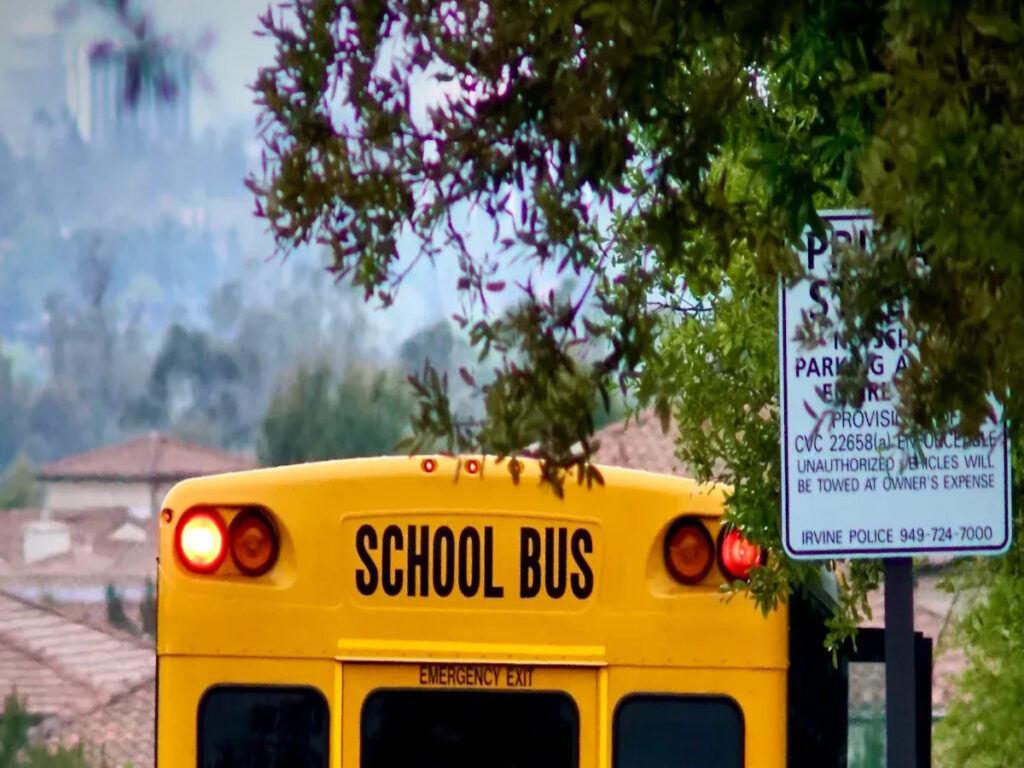
Systèmes de surveillance du trafic alimentés par l'IA
L'IA modifie la sécurité de la circulation à Busway et Brt Crossings. Ces systèmes étudient les données en direct pour prédire et gérer le trafic. Ils utilisent des programmes intelligents pour ajuster les signaux, réduire les embouteillages et rendre les routes plus sûres. Par exemple, Les outils d'IA avancés fonctionnent mieux que les anciens systèmes de signal à temps fixe. L'IA repère également des dangers comme les conducteurs de mauvais études ou les marcheurs soudains, Aider l'action rapide.
Les études montrent que les feux de circulation de l'IA fonctionnent bien dans des situations difficiles. Les tests avec des modèles informatiques prouvent qu'ils gèrent le trafic occupé et les conditions de modification. Ces systèmes s'adaptent rapidement, Garder le trafic en douceur et les passages en sécurité. Les tests du monde réel confirment qu'ils travaillent également en dehors des laboratoires. L'ajout d'IA aux systèmes de circulation aide les villes à protéger les bus, cavaliers, et Walkers.
| Aspect | Description |
|---|---|
| Focus de recherche | Utilisation des feux de circulation pour un meilleur contrôle du trafic |
| Méthodologie | Tested Deep Q-Network (Dqn) et simulateur SUMO pour les expériences de trafic |
| Résultats | Les systèmes d'IA gèrent mieux le trafic que les signaux à temps fixe |
| Importance des tests sur le terrain | Prouve que l'IA fonctionne dans les défis de la circulation du monde réel |
| Scénarios de simulation | IA testé dans différents niveaux de trafic et types de véhicules |
Signes de route intelligents et mises à jour en temps réel
Les panneaux de route intelligents changent la façon dont nous restons en sécurité sur les routes. Ces panneaux utilisent des capteurs pour donner des mises à jour en direct. Par exemple, Ils mettent en garde contre les bus ou les changements de circulation. Cela aide les gens à faire des choix plus sûrs aux passages à niveau.
Les systèmes connectés rendent cela possible. Les lumières intelligentes et les voitures partagent des données pour améliorer le flux de trafic. Les voitures autonomes envoient également des informations détaillées sur le trafic, Rendre les routes plus sûres. Le partage des données de trafic dans le monde entier aide les villes à apprendre et à améliorer la sécurité. Ces changements rendent le transport public plus sûr et plus facile pour tout le monde.
| Tendance émergente | Description |
|---|---|
| Infrastructure connectée | Les lumières intelligentes et les voitures partagent des données en direct pour ajuster le trafic. |
| Véhicules autonomes | Les voitures autonomes envoient des informations sur la circulation pour améliorer la sécurité. |
| Collaboration mondiale | Le partage des données de trafic dans le monde stimule les idées et les outils de sécurité. |
Les signes intelligents et les systèmes d'IA rendent ensemble les traversées plus sûres et plus rapides. En utilisant ces outils, Les villes peuvent améliorer les transports en commun et protéger tout le monde sur la route.
Études de cas: Utilisation réussie des panneaux de sécurité de la circulation
Exemples du monde
Les villes du monde entier utilisent des panneaux de circulation intelligents pour rendre les passages à bourse et BRT plus sûrs. Ces exemples montrent à quel point la conception et le placement améliorent la sécurité et la circulation.
- Curitiba, Brésil: Le système BRT de Curitiba utilise Bright, Signes codés en couleur. Les panneaux d'avertissement jaunes près des traversées disent aux conducteurs de ralentir. Les signes directionnels aident les passagers à trouver facilement leur chemin. Ces signes réduisent la confusion et maintiennent le trafic en douceur.
- Stockholm, Suède: Stockholm se concentre sur la sécurité des piétons avec des panneaux clignotants. Les lumières LED sur ces signes attirent l'attention, Même par temps brumeux. Les piétons se sentent plus en sécurité de traverser les rues, Et les conducteurs réagissent plus rapidement aux dangers.
- Singapour: Singapour ajoute de la technologie à ses panneaux de trafic. Les panneaux intelligents montrent des mises à jour en direct sur les bus et le trafic. Ces mises à jour aident les gens à planifier des voyages et à éviter les retards. L'approche technologique de la ville rend les traversées plus sûres et plus efficaces.
Note: Des villes comme Curitiba et Singapour prouvent que des signes clairs et la technologie peuvent améliorer les systèmes de transport en commun.
NOUS. Les villes ouvrent la voie
Aux États-Unis, De nombreuses villes ont adopté des panneaux de signalisation avancés pour les passages à bus et BRT. Ces exemples montrent comment la bonne signalisation améliore la sécurité et la commodité.
- Los Angeles, Californie: Los Angeles utilise “Voie de bus uniquement” Signes pour donner la priorité des bus. Ces panneaux coupent les retards et gardent les bus à temps. Des signes d'avertissement comme “Traversé de bus” rendre les conducteurs plus prudents et empêcher les accidents.
- Seattle, Washington: Le système BRT de Seattle a des signes pour les piétons. Les panneaux de passage pour piétons près des stations montrent des endroits sûrs pour traverser. Les matériaux réfléchissants rendent ces panneaux faciles à voir la nuit, Aider les voyageurs en fin de soirée à rester en sécurité.
- Boston, Massachusetts: Boston utilise des panneaux d'information sur les stations BRT. Ces panneaux montrent les horaires et les directions de bus, faciliter les passagers de se déplacer plus facilement. Les signes clairs réduisent la confusion et améliorent l'expérience en transit.
Conseil: Regardez des villes comme Seattle et Boston pour des idées sur la combinaison de la sécurité et de la facilité dans les panneaux de transport en commun.
Les panneaux de sécurité de la circulation sont importants pour la sécurité à Busway et Brt Crossings. Ils aident les conducteurs, promeneurs, Et les passagers évitent la confusion et les accidents. Suivre ces signes rend la circulation meilleure et les transports en commun.
Souviens-toi: Utilisation d'idées mondiales et de nouvelles technologies, Comme les systèmes AI et les signes intelligents, Peut améliorer les systèmes de transit. Ces outils rendent les routes plus sûres, délais de coupe, Et donnez à chacun une meilleure expérience. Restez à jour et soutienz les modifications qui améliorent les transports publics.
Explorez la collecte d'Optraffic de panneaux de sécurité de la circulation durables et clairs aujourd'hui, et assurer plus lisse, transports publics plus sûrs dans votre ville. Contactez-nous maintenant pour plus d'informations ou pour demander un devis pour votre projet.
FAQ
Quel est le but des panneaux de sécurité de la circulation à Busway et Brt Crossings?
Les panneaux de sécurité de la circulation aident les conducteurs, promeneurs, Et les motards restent en sécurité. Ils arrêtent des accidents, Améliorer le trafic, et protéger les passagers. Ces signes montrent aux gens où aller et quoi faire. Cela rend les routes plus sûres pour tout le monde.
En quoi les signes d'avertissement diffèrent-ils des signes réglementaires?
Des panneaux d'avertissement vous parlent des dangers, comme les passages à bus ou les zones de randonnée. Les panneaux réglementaires définissent les règles, comme “Rendement aux bus” ou “Pas d'entrée sauf les bus.” Les deux types travaillent ensemble pour garder les passages en sécurité et organisés.
Pourquoi le placement approprié des panneaux de circulation est-il important?
Un bon placement rend les signes faciles à voir et à comprendre. Par exemple, un “Traversé de bus” Le panneau placé trop tard n'aidera pas les conducteurs à réagir à temps. Mettre les signes aux bons endroits réduit la confusion et assure la sécurité de tout le monde.
Comment la technologie améliore-t-elle les panneaux de sécurité routière?
La technologie ajoute des fonctionnalités intelligentes comme les mises à jour en direct et les capteurs. Ces panneaux mettent en garde contre les bus ou les modifications de la circulation. Ces outils rendent les traversées plus sûres et aident les villes à mieux gérer le trafic.
Que pouvez-vous apprendre des pratiques mondiales de sécurité routière?
Les idées mondiales montrent à quel point les conceptions sont claires, couleurs vives, Et la technologie intelligente améliore la sécurité. Des villes comme Curitiba et Singapour utilisent des panneaux créatifs pour rendre les routes plus sûres. Apprendre d'eux peut aider votre ville à construire de meilleurs systèmes.
Conseil: Remarquez toujours les panneaux de sécurité de la circulation près de chez vous. Ils aident à garder les routes en sécurité et faciles à utiliser.

